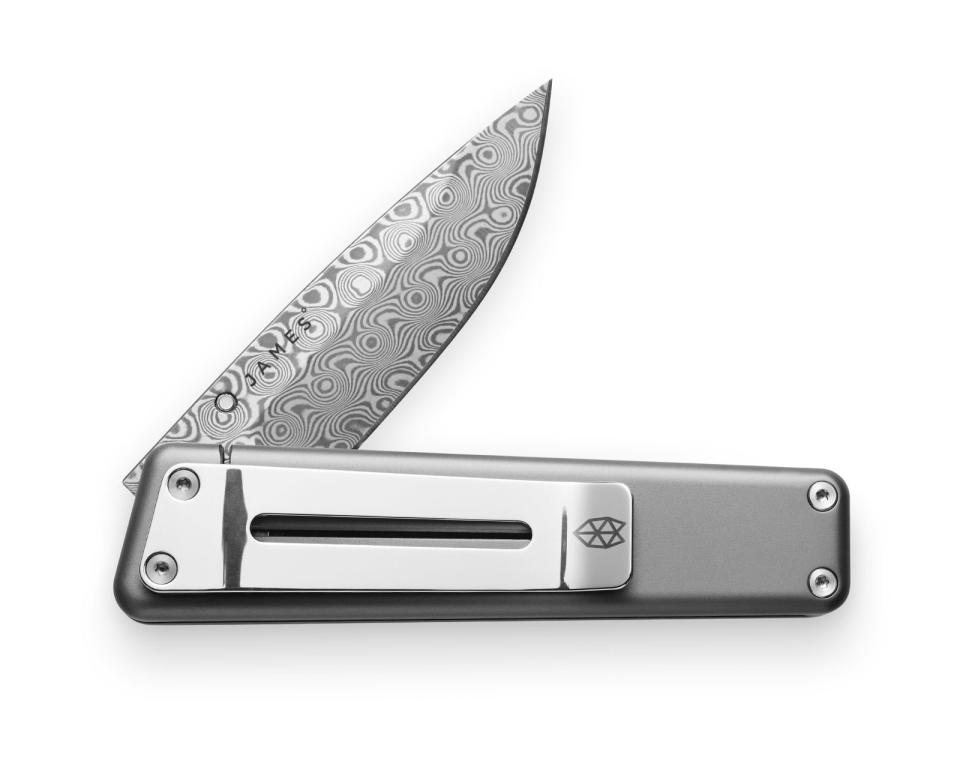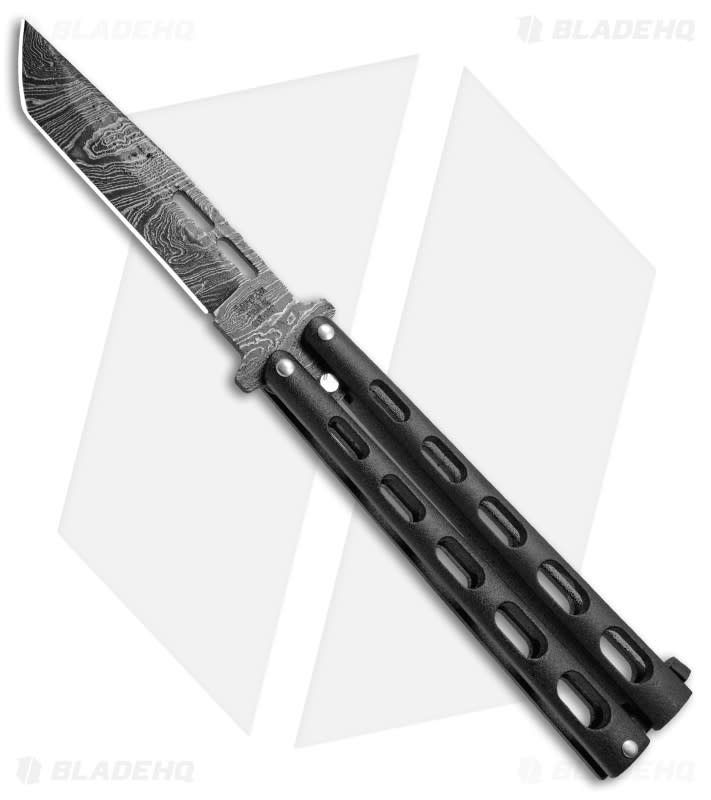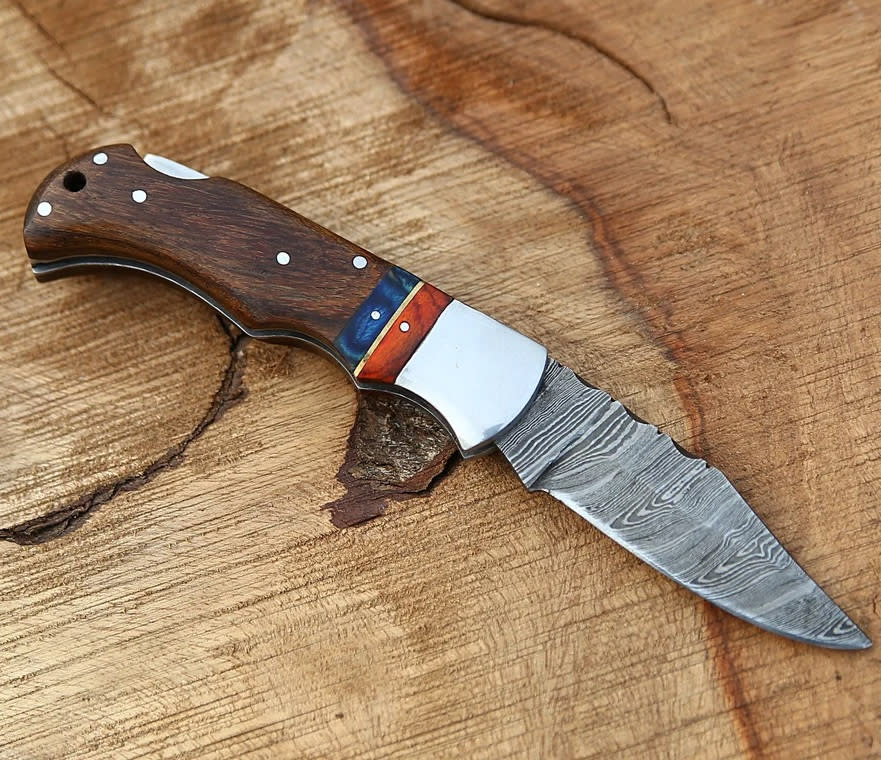What Is Damascus Steel: Everything You Ever Wanted to Know About the Mythical Metal

If you purchase an independently reviewed product or service through a link on our website, SPY.com may receive an affiliate commission.
Damascus steel has taken on almost legendary dimensions. If you’re a fan of knives and history, then you probably know what Damascus steel looks like. SPY is here to cover everything else, including Damascus steel’s historical origins and loss, its “rediscovery” and how it’s made today, what’s good about it and a few great Damascus steel knives.
Today's Top Deals
These Amazon Security Cameras Are Going for Less Than $20 Each Right Now
Over 34,000 Users Gave These Fat Burner Supplements 5 Stars on Amazon
Yes, It’s Possible To Get AirPods for Less Than $100 — But Hurry, This Deal Won't Last Long
What Is Damascus Steel?
Damascus steel has been around since before the time of Alexander the Great in the 300s B.C., originating with the production of wootz steel in India, which had impurities from being made in a high-temperature crucible. As this steel spread, it was forged into weapons notable for their unique watery bands as well as their strength, sharpness and durability. But the tough, beautiful blades only became more widely known in the Western world when Crusaders encountered them in the Near East and Middle East in the 11th century.
The name “Damascus steel” only complicates the origin story. It may be that the famous swords were named after the city in Syria because they were made or sold there. At the same time, it could come from the Arabic word “damas,” which means watered, in reference to the patterns. Or it had to do with the patterns, which resembled damask fabric. In any case, the name stuck and the steel was produced through the centuries.
How Was Ancient Damascus Steel Made?
The exact techniques for making historical Damascus steel are lost because medieval sword makers wrote nothing down to protect their methods. Though Damascus steel makers existed through the end of the early modern period, the steel’s popularity waned amid the advent of gunpowder and the techniques ultimately disappeared.
Thankfully, scientists have a pretty good idea of how the swords were made and what gave them their unique patterns thanks to surviving Damascus steel swords and academic and scientific research.
In 1980, two material scientists at Stanford University, Drs. Jeffrey Wadsworth and Oleg D. Sherby, realized the steel that they had made resembled ancient Damascus steel, according to The New York Times. Through studying their process, they were able to reveal how the ancient swords were likely made:
The process was impossible without the wootz, which often had some amount of carbon. The Stanford scientists said a range of 1–2% was key. The wootz would be processed around 2,300 degrees for a few days and then allowed to cool naturally for a day. The resulting bar of steel could then be transported for forging by a bladesmith.
The bar would then be reheated, forged and hammered at a temperature closer to 1,700 degrees. This and the day-long cooling are seemingly the key steps that result in the steel’s qualities and signature pattern. According to NYT, the moderate heat left enough carbon in the form of carbide to add strength without brittleness, and the carbide grains show up in the blade’s appearance.
The steel would be reheated again and then rapidly cooled in a liquid. It’s this last step of rapid cooling that’s led to all kinds of myths, such as quenching the blade in a slave or dragon’s blood, the latter of which seemingly inspired Valyrian steel in George R.R. Martin’s Game of Thrones.
Lastly, the blades would then be ground to achieve a fine edge.
How Is Damascus Steel Made Today?
Modern Damascus steel doesn’t rely on wootz because there are better, more high-quality steels available. The most common method is called pattern welding, a kind of laminated steel process that involves welding multiple layers of different steels together.
Here’s how it works:
Multiple steels or metals are welded together into what’s called a billet. Thanks to technological advances, knifemakers can use high-carbon steels, stainless steels, titanium and even metals like copper to make Damascus steel knives. Great makers will choose the right metals for the purpose and needs of the knife. In some cases, there can be hundreds of layers of metal. According to NYT, Japanese samurai swords used a similar layering and folding process.
The billet goes into a forge operating at anywhere from 1,600 to 2,300 degrees, depending on the needs of the combination of steels. Getting the billet this hot makes it more malleable.
The molten steel is then flattened and lengthened using a hammer and/or hydraulic press.
After periods of heating and cooling to ensure the steel is strong, it can be cut into a shape and then ground to deliver the knife’s edge and reveal the Damascus steel pattern beneath. An acid bath before grinding can further reveal the pattern because it affects the steels differently. This pattern can also be designed and controlled with additional tools during the forging process.
The result is a beautiful blade with a mix of soft and hard steels, serrations on the edge and great toughness.
Check out these two videos to see two masters at work. The top one shows a chef’s knife being made and the bottom shows a copper-inlaid Bowie knife being made.
Why Buy Damascus Steel Today?
The truth is that there’s no single reason beyond beauty to purchase Damascus steel over other kinds of knives. Chad Nichols of Nichols Damascus, one of the best known Damascus steel makers, said modern Damascus steel is definitely better overall than non-modern steels; but other modern steels, depending on their alloys and make, can be much better for particular tasks. But at the end of the day, people buy Damascus steel because it’s pretty.
In other words, it’s the alloy and what the bladesmith does to it that ultimately makes a knife worth buying, whether it’s Damascus steel, stainless steel, carbon steel or some other alloy.
That being said, you can get all kinds of all-around great Damascus steel knives, including those with carbon steel, stainless steel and titanium alloys as well as versions with specific kinds of patterns and designs. That means they can be as versatile as any other knives when cared for and used properly.
Why Isn’t Damascus Steel More Popular?
You don’t see Damascus steel everywhere for two broad reasons: cost and maintenance.
First, most Damascus steel blades tend to be high in carbon and low in other materials like chromium that go into stainless steel. That means they require a little more maintenance to avoid rust. Since most people don’t want to deal with that, knifemakers create more stainless steel instead.
Second, the best Damascus steel is made by expert craftsmen like Chad Nichols, Devin Thomas and Jeremy Marsh, but that means it takes time and time costs money. Major manufacturers like Spyderco make Damascus steel blades as well, but because they don’t make as many, they still tend to cost more than many of their stainless steel products.
But all steels come with pros and cons, and Damascus steel is mounting a comeback thanks to its beautiful appearance and professional knifemakers who are creating better Damascus steel tools than ever before.
If you are interested in picking up a Damascus steel knife, check out some great options below at a variety of price points.
1. The Chapter From The James Brand
The Chapter from The James Brand is the epitome of high-quality, modern Damascus steel. Made with a Swedish-produced stainless Damascus steel, a titanium frame-lock construction and an extreme attention to detail, this knife works as well as it looks.

Buy: The Chapter from The James Brand $399.00
2. Bear & Son Tanto Butterfly Knife
The Bear & Son Tanto Butterfly Knife combines the two coolest knife features in the world: Damascus steel and a butterfly deployment. You could pay more for a Damascus steel knife, but why, when this knife has more than enough beauty and cool factor — not to mention fun?

Buy: Bear & Son Tanto Butterfly Knife $79.95
3. OrkloKnife Damascus Folding Pocket Knife
The OrkloKnife Damascus Folding Pocket Knife offers everything you want a Damascus steel knife to look like without breaking the bank. You get a beautiful Damascus steel blade and any one of a variety of woods for the handle, including rosewood, white bone and black horn. Plus, for a bit more money, you can have the handle laser engraved for a personal touch.

Buy: OrkloKnife Damascus Folding Pocket Knife $39.99
More Top Deals from SPY
Best of SPY

